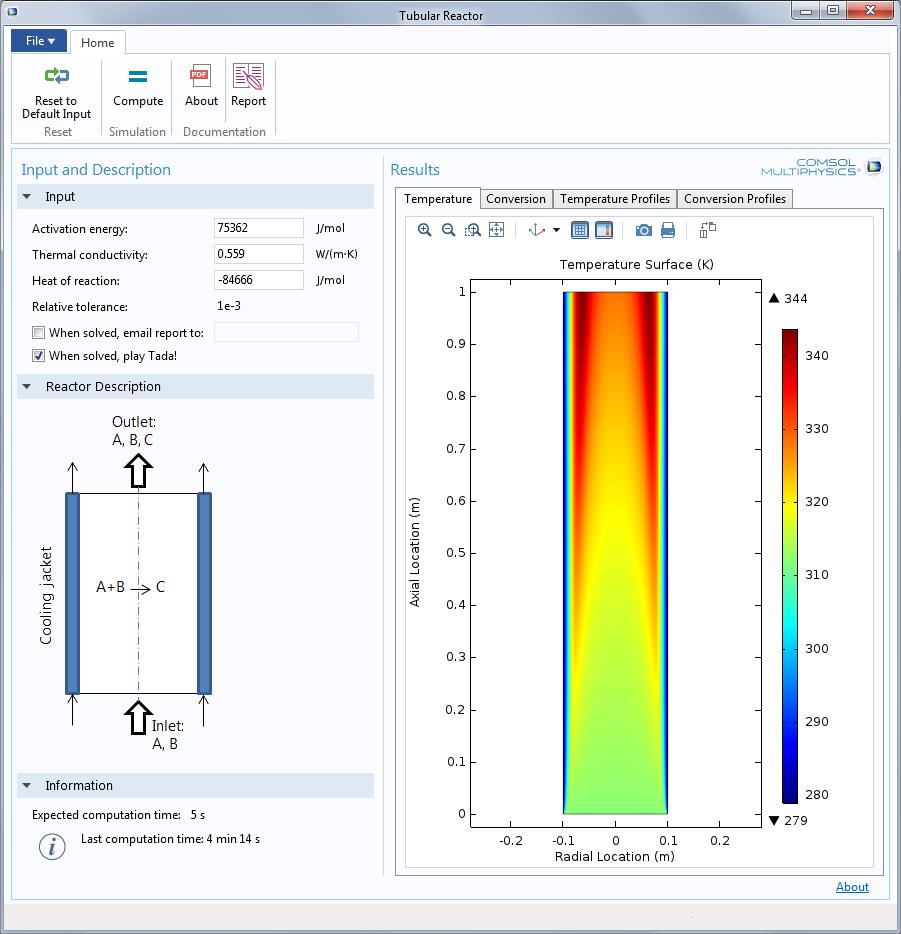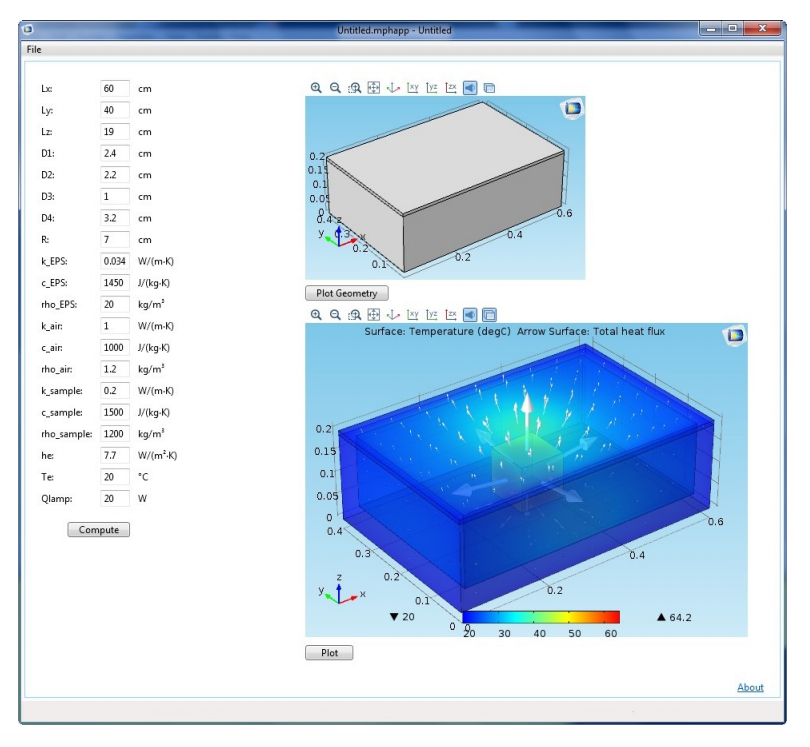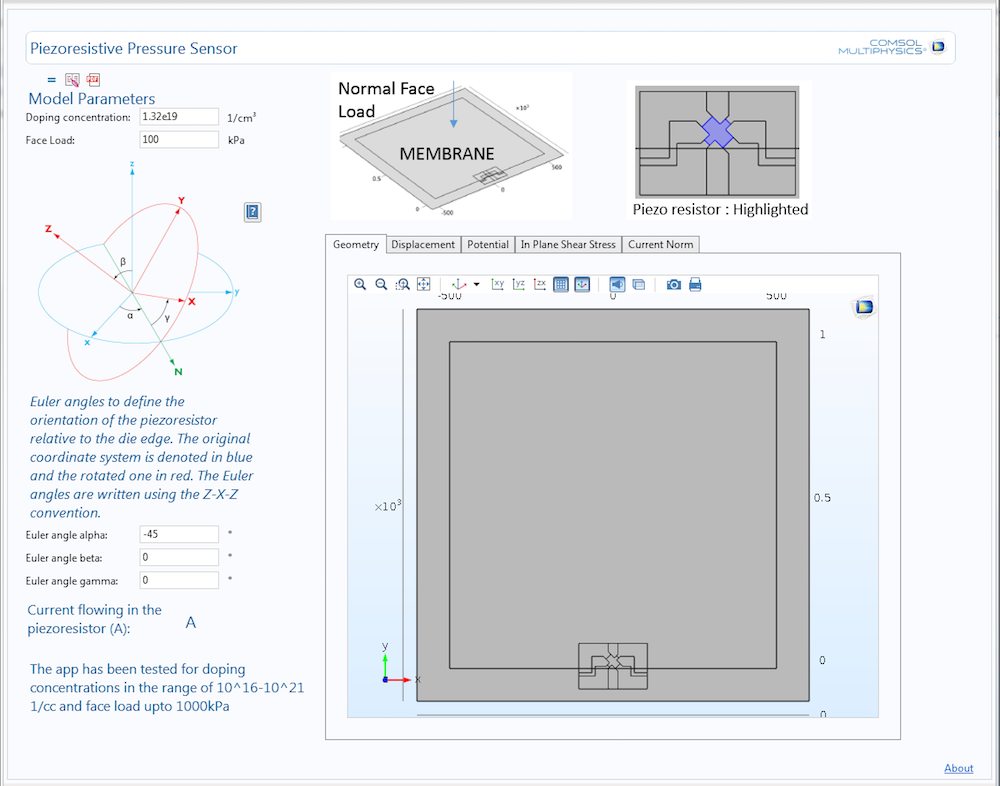
Maximizing the efficiency of the learning process while keeping students engaged is the common goal that professors hope to achieve in any course. In the realm of physics- and engineering-based courses, simulation apps are helping to strike such a balance by introducing students to complex concepts in a simplified format. Here, we’ll take a look at some of the innovative ways that university professors are utilizing apps within the classroom.
The Application Builder: One Tool with Many Uses
In any simulation study, there are complex theories and physics that must be considered in order to obtain accurate, realistic results. What is unique about simulation apps is that they are able to incorporate these elements into the underlying model while hiding such complexities behind a user-friendly interface. Such capabilities give those without simulation expertise the ability to set up their own numerical tests, all while enhancing their understanding of various scientific methods along the way.
Within the university setting, simulation apps are evolving as a powerful tool for introducing students to challenging concepts and advancing their modeling skills. What’s more is that as students continue with their studies, professors can take advantage of the Application Builder’s flexibility and incorporate greater complexity into an app’s design to further advance their learning.

The Tubular Reactor app, available in our Application Gallery, offers just one example of how teachers can simplify the process of teaching mathematical modeling concepts to students.
So how, you might wonder, are professors incorporating apps into their curriculum? Let’s take a look at two cases.
Exploring the Role of Simulation Apps in the Classroom
Advancing Students’ Understanding of MEMS Design
In 2015, Mumbai University in India introduced MEMS technology as a new course within their curriculum, combining theory with hands-on experience in the lab. Like many educators around the world, professors at this university recognize the importance of ensuring that students understand the basic principles of scientific methods at an early stage. The students, however, are often not yet ready to set up numerical problems on their own right away. They need to first invest a lot of time in learning the simulation software and mastering its use before they can carry out their own tests. To address this challenge, the professors turned to the Application Builder in COMSOL Multiphysics, having a set of apps developed that could better illustrate complex ideas.
With the easy-to-use apps — all of which are designed to be self-explanatory — students have been able to more quickly grasp the theory behind various scientific concepts. Each app includes notes that provide a clearer overview of its underlying theory as well as access to numerous design parameters that depict how device performance changes when parameters are modified.
“Since the students do not need to learn the software to use apps, this approach offers a quick way to understand the underlying principles,” notes Darshana Sankhe, a professor at the university’s DJ Sanghvi College of Engineering. “It frees up time for students to focus on other aspects of the topic at hand.”
The apps themselves cover a range of MEMS technology. Take the pressure sensor moisture absorption app, for instance, which shows students how MEMS devices react to a moist environment. The thermal expansion app, meanwhile, offers an overview of MEMS materials and their properties, while demonstrating the working principles behind a thermal actuator. The screenshots below highlight some of the additional apps created for the course.
MEMS-based apps utilized by professors at Mumbai University. Left: Piezoelectric shear-actuated beam app. Right: Piezoresistive pressure sensor app.
The benefits of incorporating such apps into the course’s layout extend not just to the students, but to the professors as well. Chetana Sangar, a professor and head of the Department of Electronics and Telecommunication at the Bharat College of Engineering, offers insight: “Not only have these apps helped students, but they have also helped us professors prepare for this new course. The apps that we have developed are very useful and I have recommended them to my colleagues in other colleges as well.”
An Easier Approach to Explaining Scientific Methods
At the Eindhoven University of Technology, professors also recognize the importance of teaching students the principles of scientific methods as early on as possible. The challenge here is that students don’t yet possess the knowledge and skills that are required to solve realistic heat transfer problems on their own. Recognizing this factor, professors at the university sought to simplify the learning process — and offer hands-on experience — in a first-year scientific methods course on building physics. Their answer came in the form of building an app.
The app itself is centered around a 3D heating experiment that involves analyzing three different methods for determining the thermal conductivity of polymethylmethacrylat (PMMA), with the goal of finding out which one is most accurate. The simulation study focuses on a box composed of expanded polystyrene, with a PMMA sheet attached at the top. For the case of Fourier’s law of conduction, one of the studied methods, a heat flux sensor is installed to determine the sheet’s thermal conductivity.
By using a simulation app, students are able to perform data analysis at an early stage, simulating output sensor data, from temperatures to heat fluxes. Such data is then used to calculate the sample’s heat conduction coefficient (the objective parameter), information that can then be compared to the input value. In this way, students successfully learn how to verify both their simulation and data analysis methods. Further, they are able to bring the skills and knowledge that they obtain through virtual testing, including how to improve the expected responses of the sensor, and apply them when conducting the actual experiments.

The 3D heating simulation app designed by professors at the Eindhoven University of Technology.
Along with the advantage of helping students understand key concepts faster, Jos van Schijndel, an assistant professor at the university, notes how the hands-on approach is also generating greater student engagement and interest: “The students are much more enthusiastic to start with the simulation because they can interact very intuitively with the simulation results from the beginning. This stimulates their curiosity to find out more about what’s behind the underlying model.”
Optimizing Teaching and Learning Methods with the Application Builder
Simulation apps, by design, hide complex theories and physics behind a user-friendly, customizable interface. These same advantages that are helping to optimize design workflows across a range of industries are also allowing professors to more efficiently teach students. When developing an app, professors can tailor the design in a way that best suits the needs of their specific course, from the included physics to the overall degree of complexity. Such flexibility enables the creation of an interactive learning tool that correlates with the needs of a particular set of students and can evolve with them as their skill set grows.
Further Resources on Designing and Deploying Simulation Apps
- Teaching and learning is just one use case for the Application Builder; read this blog post to explore more uses of simulation apps
- For helpful tips on how to get started building apps, check out our Intro to Application Builder Videos series






Comments (0)